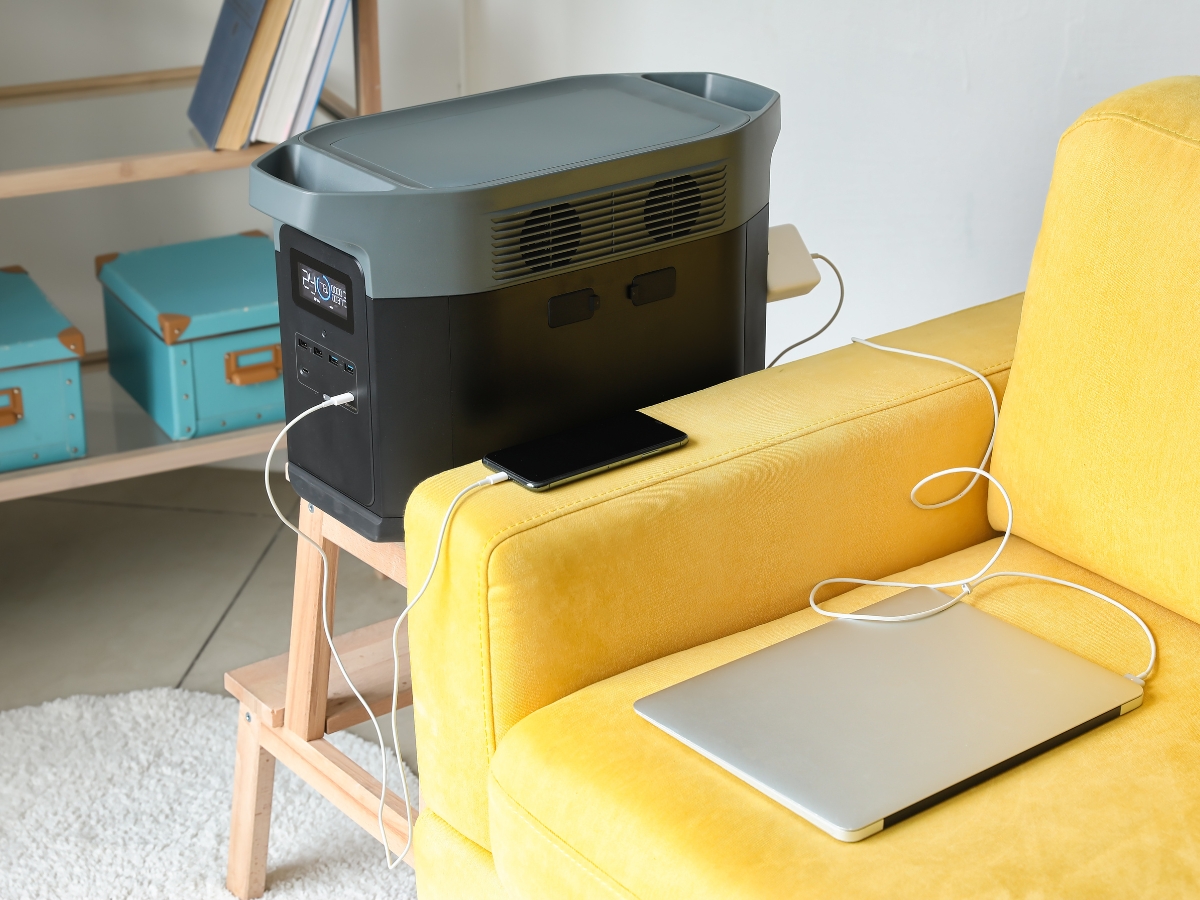Power outages have increased by 73% from 2019 to 2020, which resulted in 1.33 billion hours of outage, many of which have been caused by power surges.
It’s essential for our well-being to have access to an uninterrupted, reliable supply of electricity, but what happens if there’s a power surge?
Here are a few of the important topics we’ll look at today;
- What a power surge is.
- What causes a power surge.
- How we can prevent power surges.
- Power Surge FAQ.
Let’s take a look at what they are and what we can do so that we’re not left in the dark.
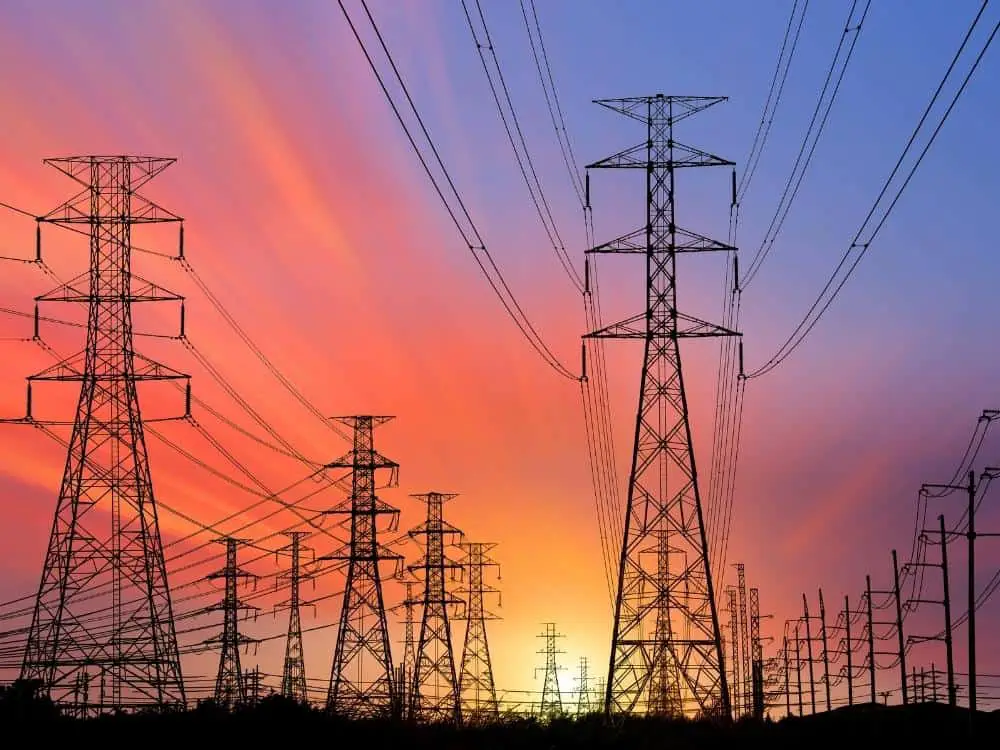
Are Power Surges Real?
Yes, power surges are very real and they can cause numerous problems in the home. They can happen quite frequently, but your home can go years without experiencing a power surge until something causes one, either faulty wiring or a lightning strike.
Power surges can not only wipe out our power, but they can also cause a serious risk to our homes.
What Is A Power Surge?
The standard voltage amount in the United States is 120 volts, but it ranges from 120 to 169 volts multiple times per day. Power surges happen when the voltage passes 170 volts, and they can be large or small.
After a power surge, you may experience reduced performance in the item that experienced the power surge, completely damaged beyond repair, or anywhere in between.
What Are The Signs Of A Power Surge?
There are a few signs to watch for if you’re looking for evidence of a power surge. You may smell a burnt, acrid odor near power sources or close to the affected device.
- If you inspect your surge protector or power strip, you may discover that it requires resetting.
- You may also notice that your lights have flickered, but haven’t stayed off long enough to make your clocks flash except they are for some unexplainable reason.
- Another sign you had a power surge is if the device you were using is off, or it does not want to turn on.
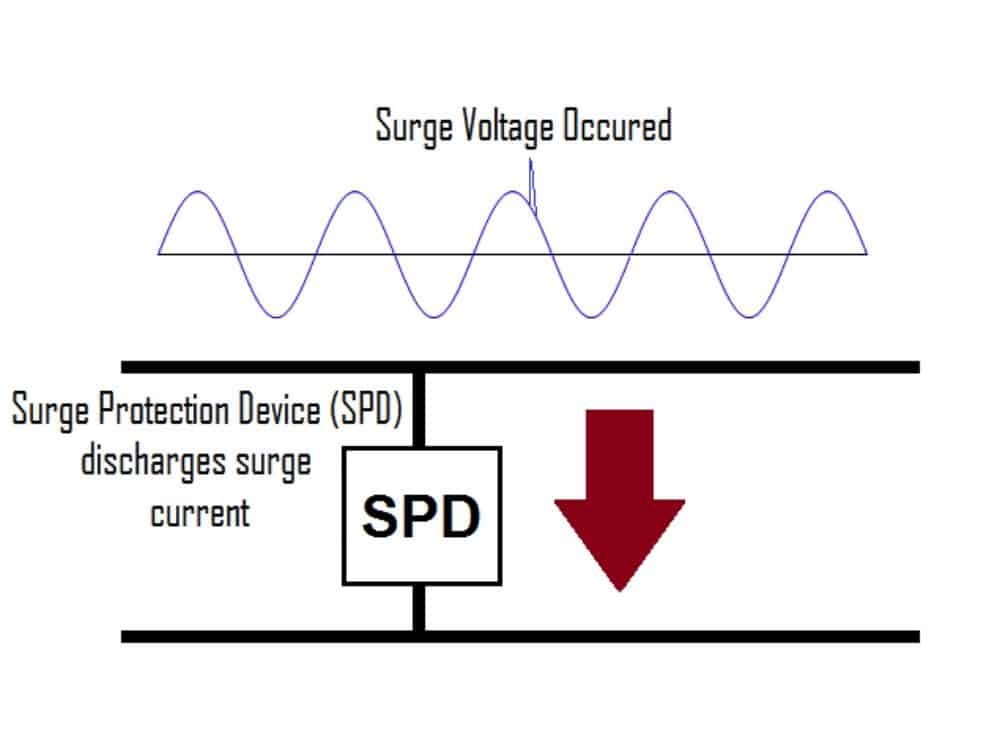
What Happens During A Power Surge?
When there’s a power surge, it interrupts your electricity flow before resuming normal function, or it sends electricity back into the system when it isn’t supposed to do that.
While not exact, a comparison would be burning out an incandescent lightbulb. You flip the switch to turn on the light, and when the light turns on, it suddenly stops working.
It was working a few minutes earlier before you turned it off, but now it stopped working.
Now pretend there was an extra little surge of electricity to the bulb while it was still on that would have burnt out the light bulb.
- The increase in voltage would exceed the voltage that normally flows and when it goes through the wires, it can damage anything in your home whether it’s a hairdryer, a laptop, or even your HVAC unit.
How Long Is A Power Surge?
While the effects of a power surge can last several seconds, the actual time a power surge lasts is less than a thousandth of a second.
While you can’t predict when a lightning strike will cause a power surge or when lights will come back on after a power outage, it’s not advisable to touch something when a power surge occurs.
The reason for this is that voltage from the surge varies from hundreds of volts to thousands of volts.
What Causes A Power Surge?
There are many things that would cause a power surge, ranging from faulty wiring, power outages, or even lightning. Below, we’ll go over each one in more detail.
1. Blackout Or Power Outage
A blackout or power outage typically happens when there’s a failure of the power grid. The power surge doesn’t happen when there’s a lack of electricity, but when the power comes back on.
This is due to the sudden jump in current when they finally get power back to households. This sudden surge of power can damage electronics and appliances that don’t have surge protectors.
This is why it’s important to unplug devices and electronics when the power goes out.
2. Electricity Overload
If a device or appliance draws too much power from a single circuit, it can cause an overload and a power surge. This occurs when you plug too many devices into an extension cord, which draws power from the same circuit.
This risks a potential voltage spike from the overwhelmed circuit which not only trips the breaker or blows the fuse but can damage the devices plugged into the extension cords.
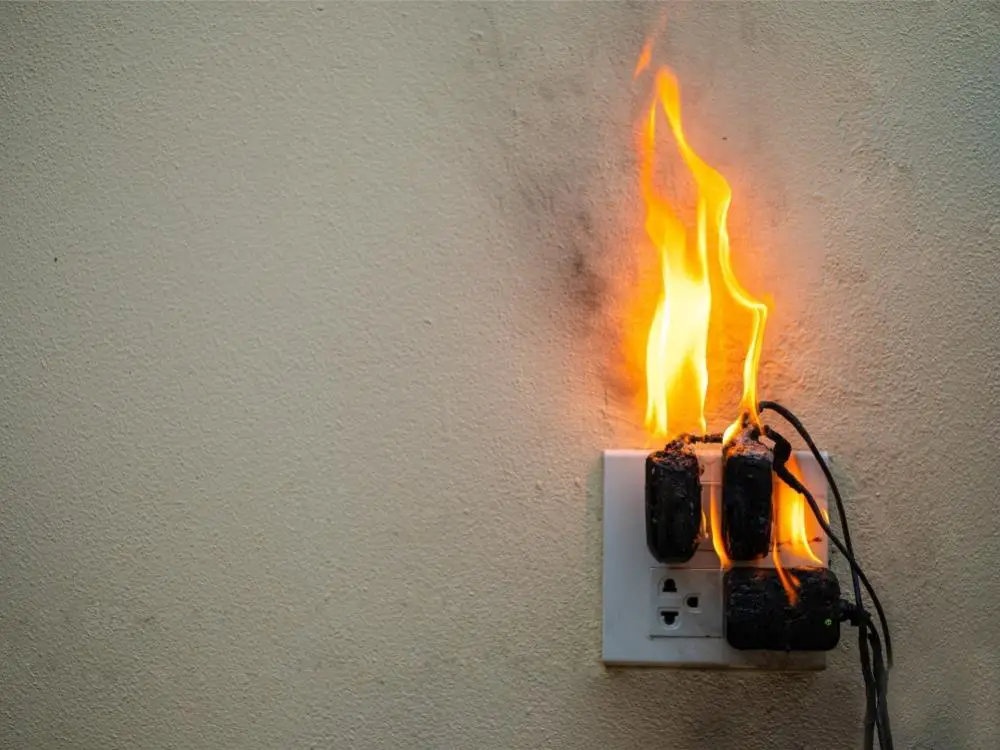
3. Lightning Strikes
Lightning strikes hardly damage electronics or appliances through direct exposure, but they can still cause a power surge by striking power lines.
When a lightning bolt strikes a power line, it produces an extremely large voltage, which the electrical system has no other option but to accept and send along the line.
For example, a lightning strike two blocks away has the ability to fry a desktop computer that’s not plugged into a surge protector.
Or you purchased a brand new smart TV that no longer works after a thunderstorm struck a powerline half a mile away and caused a power surge that affected several homes.
4. Bad Wiring
It’s easy to see how bad wiring can cause a power surge, even more so if the wires are damaged or exposed. While it’s difficult to detect bad wiring behind walls, there are some signs that your home may have faulty wiring.
If you see signs of faulty wiring, immediately turn off the electricity to the area, unplug your electrical devices and contact an experienced, certified electrician.
Signs of bad wiring include frequently tripping circuit breakers, buzzing coming from outlets, a burning odor coming from outlets or wiring, flickering or dimming lights, warm or vibrating spots in the walls or outlets, or discolored outlets.
5. Bad Breaker
Circuit breakers exist to protect circuits in the event of an overload or from short-circuiting. It is possible for circuit breakers to go bad and, when they do, they can cause a power failure.
A few things that cause circuit breakers to go bad are high spikes in voltage, overloads that last a long time, and faulty wiring. When a circuit breaker detects something wrong with the flow of electricity, it will flip the switch and stop the flow of electricity.
If there are power spikes or power surges, they can eventually cause an electrical circuit breaker to fail. When that happens, the bad circuit breaker now allows power surges to affect the home, electronics, and whatever else the power surge can affect.
How Do I Stop A Power Surge In My House
While you can’t stop a power surge when it’s happening as it occurs in a thousandth of a second and you simply don’t move that fast and aren’t completely resistant to electricity, there are a few things you can do to prevent power surges in the future.
1. Use Surge Protectors
One thing you can do is use surge protectors for your computers and televisions. Even if you don’t use a desktop computer, you do need to recharge your laptop and it needs protection from electrical surges too.
Surge protector outlets and power strips are the most common types of surge protectors and will block excess voltage that would ordinarily affect your devices.
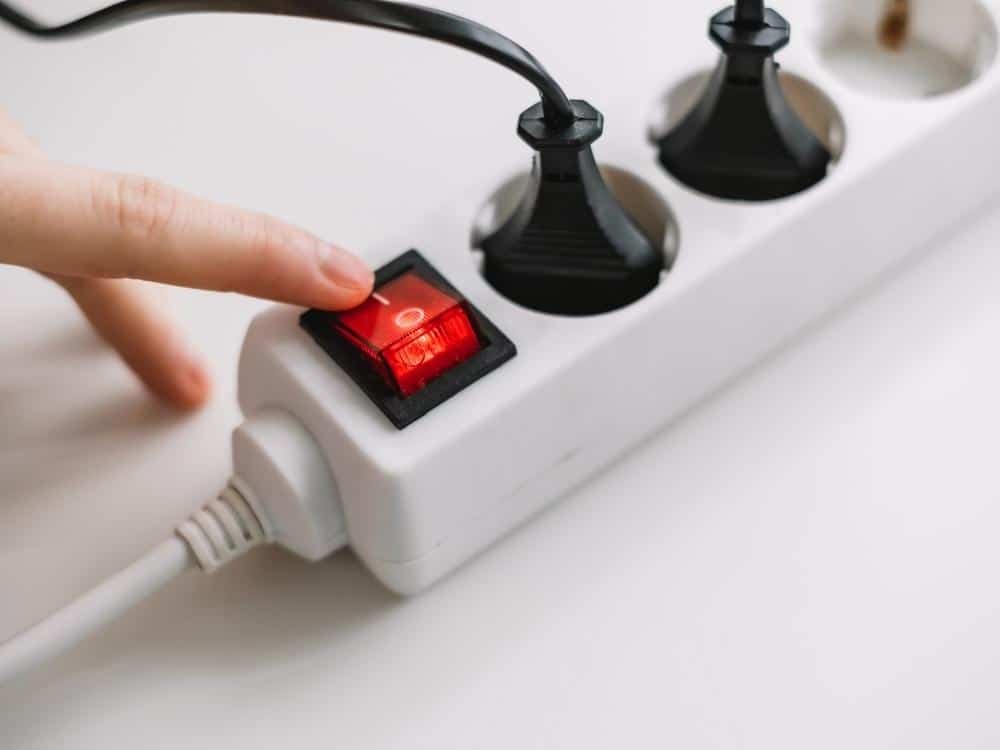
2. Invest In A Whole-Home Surge Protector
Whole house surge protectors are hard-wired into your service panel, which means you need an experienced, licensed electrician to install one. The better ones have lights or alarms that tell you when you’ve experienced a power surge.
These act the same way as a power strip and are installed at the primary breaker box between the electrical grid and your home’s electrical system.
3. Unplug The Electronics
When you know there’s a lightning storm nearby, or might be one while you’re out of the house, unplug all your sensitive electronics to keep them safe and unaffected by potential power surges from lightning.
4. Have Your Wiring Inspected
A great way to mitigate potential future power surges is to have an electrician inspect the wiring in your home for any issues.
This is a must if you’re buying an older home as their electrical systems aren’t always up to code and may have outlets that don’t function properly.
What Would Cause Power Surges In A House?
Other than what was previously listed above, (lightning strikes, bad wiring, blackouts, electricity overload), there are a couple more that would cause a power surge in a house. These include improper installation and lack of maintenance.
1. Improper Installation
Improper electrical wire installation, either from a previous DIY attempt or a job from an inexperienced electrician, can also cause a power surge in the house.
Homeowners may take the DIY route in an effort to save money, but one of the biggest problems they leave in their wake is ungrounded or unprotected wires.
2. Lack Of Maintenance
It’s easy to put off maintenance until there’s an actual problem, but it’s more expensive to repair problems than it is to prevent potential problems.
Annual home maintenance, whether it’s for your HVAC system or your electrical system is a must.
There are a few things you can do to test your wiring, such as using a multimeter, but you must have the other electrical maintenance performed by a certified electrician.
What Causes A Power Surge In A Neighborhood?
One of the most common causes of a power surge in a neighborhood is lightning strikes. A lightning strike won’t affect just one house but will affect many homes within a neighborhood.
Other potential causes for a power surge in a neighborhood include downed power lines or malfunctioning equipment from utility companies.
- If you see a downed power line, do not walk near it or drive over it. Always assume downed power lines are live and stay as far away as you can.
- If you’re in your car and a power line falls on your car, stay in your car, call emergency services and wait for them to tell you that it’s safe to exit the vehicle.
- If you’re walking and power lines fall near you, keep your feet together and take small, shuffling steps until you’re at least 40 feet away.
Lightning
Yes, a bolt of lightning is a surge of electricity, a very large one at that. The average household current is anywhere between 120 and 220 volts while a typical flash of lightning is about 300 million volts up to 1 billion volts.
Positive lightning or lightning that originates from the top of the clouds has higher voltages than the lightning that originates from lower portions of the clouds.
Can You Fix Power Surge Damage?
Yes, there are a few things you can do when you notice that a power surge has damaged an appliance or device.
- First, assess your home for damage by walking around and checking power outlets. Once you’ve finished that, check your appliances and electronics.
- If you find any affected electronics, reset and unplug your devices before resetting your circuit breaker if you have experienced a power outage after a surge.
- You will need a professional to do a thorough check of your electrical system and to check your HVAC system.

